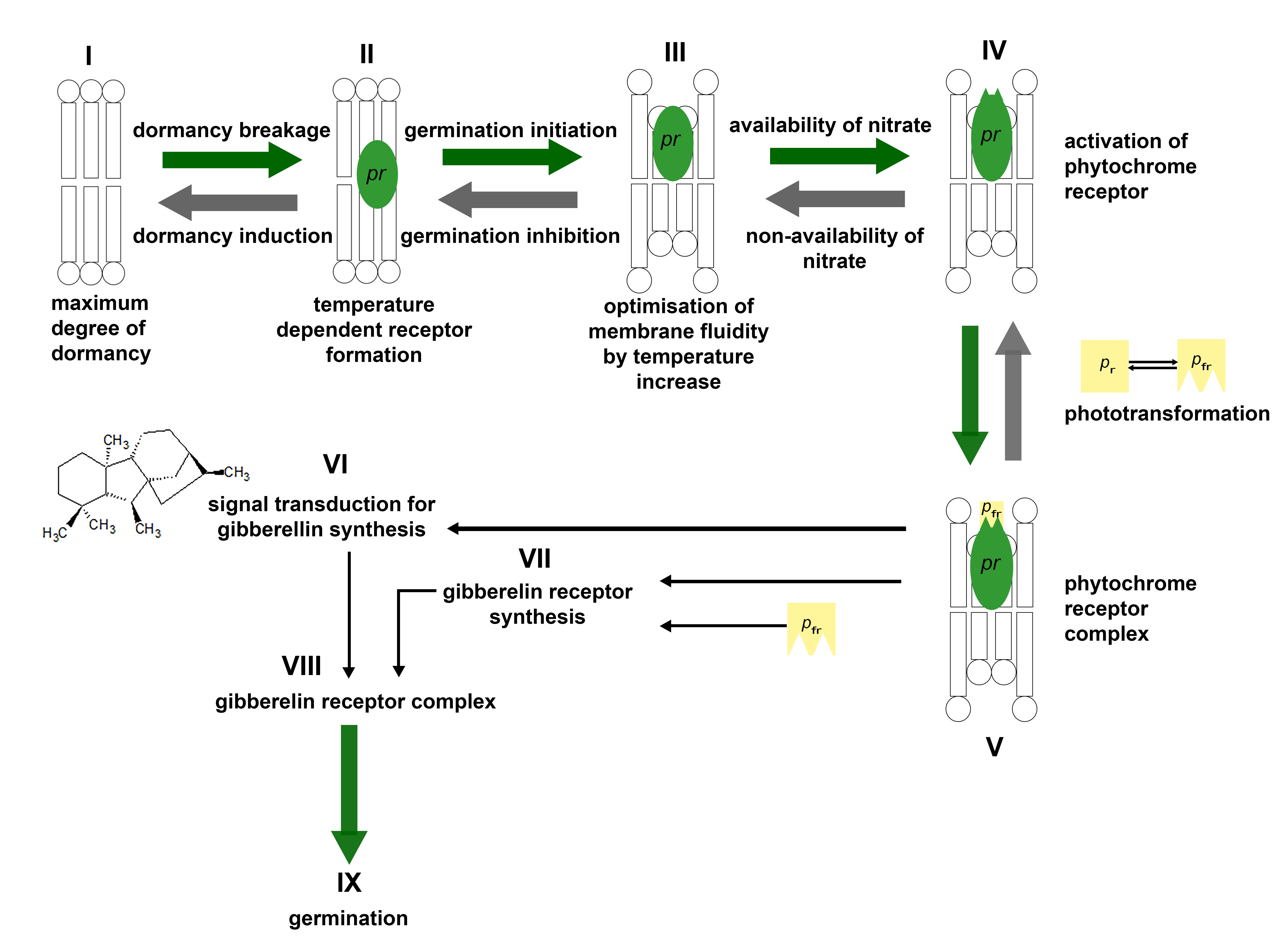
Modified hypothetical physiological dormancy model of Hilhorst (1998). Originally this model was developed for seeds of magnoliophytes in soil seed banks, but could be particularly applied on charophytes. I. the stage of maximum dormancy is characterised by lacking phytochrome receptors at the plasma membrane. II. The formation of phytochrome receptors (pr) is temperature-dependent. III. Optimisation of membrane fluidity by increased temperatures. IV. activation of phytochrome receptors by nitrate. V. Formation of photoreceptor complexes by binding of active phytochrome (Pfr). VI. signal transduction for gibberellin synthesis. VII. gibberellin receptor synthesis VIII. gibberellin receptor complex by binding of gibberellin or gibberellin precursors. IX. germination initiation.